
Do you have a question about the TCL TAC-09CS and is the answer not in the manual?
| Brand | TCL |
|---|---|
| Model | TAC-09CS |
| Category | Air Conditioner |
| Language | English |
Instructions for ordering replacement parts, including necessary information like model number and part name.
A procedure for accurately measuring temperature differences for system analysis.
Details the purpose of each button on the remote controller for system operation.
Guides on how to set the remote controller type for Cooling Only or Heat Pump operation.
Outlines time delay, frost prevention, and high temperature protection controls.
Explains the 'I Feel' and 'Cooling' modes, including initial temperature settings.
Explains the system's operation in DRY mode, including cooling at 18°C and fan speed control.
Describes HEATING mode settings and cold air prevention control.
Details defrost starting and terminating conditions, and the defrost time chart.
Explains the role of the assistant thermistor in heating capacity and its operating conditions.
Describes the operation of the unit in FAN mode.
Explains the function and operation of the 4-way valve for cooling/heating switching.
Details the automatic temperature adjustment and shutdown sequence in SLEEP mode.
Describes rotational frequency feedback and auto fan speed control.
Details the vane motor drive, positioning, and auto/swing modes.
Guides on setting and canceling timer operations for the air conditioner.
Explains how to operate the unit in emergency mode and the test run procedure.
Describes the function that memorizes and resumes previous settings after power restoration.
Categorizes air conditioners based on their primary function.
Classifies units based on how they are installed in a building.
Explains the four essential elements that define air conditioning comfort levels.
Describes the cooling effect achieved through evaporation and phase changes of refrigerants.
A visual representation of the refrigerant flow through the system's components.
Explains the functions of compression, liquefaction, expansion, and evaporation in the cycle.
Defines terms like air conditioning, capacity, humidity, and heat transfer.
Explains thermal flow through radiation, conduction, and convection.
Explains the function of the compressor, condenser, and evaporator in the refrigeration cycle.
Details the roles of capillary tubes, dryers, mufflers, strainers, and service valves.
Explains the operation of motors, fans, thermostats, and capacitors.
Details the function of overload protectors, high pressure switches, and sump heaters.
Explains the purpose of accumulators and 4-way reversing valves.
Explains how solenoid valves regulate refrigerant flow based on power.
Describes the role of check valves in preventing reverse refrigerant flow.
Describes how refrigerant states change during evaporation, compression, and expansion.
Provides a step-by-step guide on how to draw a refrigerating cycle on a Mollier diagram.
Explains the state of refrigerant gas at the compressor outlet.
Describes the state of refrigerant liquid before the expansion valve.
Explains the state of refrigerant exiting the expansion valve.
Formulas for calculating the refrigerating effect based on enthalpy changes.
Formula for calculating the work required for refrigerant compression.
Formula for calculating the heat emitted by the condenser.
Formulas for calculating refrigerant circulation based on capacity and effect.
Defines COP and provides formulas for calculating it.
Details how to read and use the psychrometric chart to find air state properties.
Explains the DI calculation and its interpretation for comfort levels.
Explains the cause of dewing and provides a table for preventing it.
Provides formulas for calculating the combined sound level from multiple sources.
Presents formulas for calculating sound pressure level and attenuation.
Explains Noise Criteria (NC) curves and lists allowable noise levels for different places.
Lists components of load calculation: walls, glass, wind, body heat, equipment, etc.
Provides a table showing heat generated by humans based on posture and room temperature.
A table with items, area, coefficients, and calculation methods for cooling load.
Specifies the calorie needs per square meter for different room types.
Lists factors like insulation, windows, and occupancy affecting capacity selection.
A method for selecting capacity by considering clearance rates and standard conditions.
A graphical tool to match cooling capacity requirements to unit sizes.
Focuses on power supply, voltage, and wire capacity as external factors affecting operation.
Specifies required wire cross-sectional areas based on rated current.
Outlines checks for switches, function parts, protectors, and compressor motor.
Procedures for checking capacitor continuity, capacity, and dial vibration.
Guides on independent testing of motor fans and diagnosing common issues.
Identifies common thermostat issues like gas leaks, shorts, and wiring errors.
Explains how to test thermistors for continuity and resistance variation.
Step-by-step procedures for electrical checks on compressor terminals.
Covers issues such as compressor not starting, poor compression, and overcurrent.
Lists checks for thermostat, filter, fan switch, ventilation, heat exchanger, and load.
Relates suction/discharge air temperature differences to running current and refrigerant status.
Lists normal pressure readings for high and low-pressure sides.
Correlates abnormal pressure/temperature readings with potential causes and explanations.
Identifies symptoms of refrigerant shortage and provides actions for diagnosis and correction.
Describes symptoms of a closed refrigerant system and necessary actions.
Identifies symptoms of overcharging and outlines corrective actions.
Describes symptoms of bad compression and methods for diagnosis.
A table summarizing potential causes and corresponding check items for refrigerant issues.
Essential safety and operational precautions to follow during repair work.
A flowchart for diagnosing why the product is not operating, starting with power checks.
A flowchart for diagnosing issues with the room fan's operation.
Flowcharts for diagnosing issues with compressor or outdoor fan operation.
Flowchart for diagnosing issues with the up/down vane operation.
Flowchart for diagnosing issues with the left/right louver operation.
Flowchart for diagnosing issues with remote control function settings.
Flowchart for diagnosing issues with the cooling/heating conversion function.
Addresses gas leaks caused by improper pipe cutting and provides guidelines for correct cutting.
Explains gas leaks from burrs and provides guidelines for proper burr removal.
Discusses gas leaks from incorrect flaring sizes and provides recommended dimensions.
Addresses leaks from over or under-fastened flare nuts and provides torque guidelines.
Explains water leaks due to improper leveling or drain hose connection.
Covers water leaks from improper drain hose extension or routing.
Explains water leaks from upward drain hoses and clogged drains.
Discusses water leaks from incorrect insulation on connecting and hidden tubing parts.
Explains water leaks from improper tubing/taping and provides guidelines for U-traps.
Discusses cooling capacity reduction due to Freon shortage and tube extension.
Explains how narrow air intake/discharge spaces reduce cooling capacity.
Explains how narrow air intake/discharge spaces affect window unit cooling capacity.
Discusses reduced cooling due to improper outdoor unit placement or awning.
Explains how using crushed or incorrect tubing affects cooling capacity.
Covers capacity reduction from excessive tubing length and height differences.
Explains noise from unstable units and loose fittings, providing installation guidelines.
Discusses noise and vibration from unsecured surplus tubing and provides fixing guidelines.
Explains electrical issues from loose screws and incorrect outdoor fan wiring.
Discusses electrical problems from insulation breaks in cables and provides confirmation methods.
Explains how smells/gases can enter via the drain line and recommends adding a trap.
Introduces R407c properties, composition, and phase change characteristics.
Highlights differences in charging procedures, composition, leak detection, and temperature behavior.
The first part of installation instructions specifically for wall-mounted split type units.
Lists the advantages and disadvantages of different refrigerants for installation purposes.
Enumerates essential tools for installation, including screwdrivers, drills, and meters.
Lists necessary accessories like cables, tapes, and fasteners for installation.
Guides on choosing optimal locations for indoor and outdoor units to ensure proper function.
Specifies maximum allowable piping length and elevation differences between units.
Instructions for securely mounting the installation plate on the wall.
Guidance on drilling the correct size and angled hole through the wall for piping.
Step-by-step guide for cutting pipes, removing burrs, putting nuts on, flaring, and checking.
Instructions for routing indoor tubing, drain hose, and connecting cables.
Guides on hanging and securing the indoor unit onto the installation plate.
Instructions for properly tightening flare nuts and wrapping pipes with tape.
Guides on routing indoor tubing and drain hoses for rear piping configurations.
Instructions for inserting cables and hanging the indoor unit.
Details on connecting pipes and the drain hose, including wrapping insulation.
Instructions for aligning and tightening flare nuts on the outdoor unit.
Guides on managing outdoor pipings and installing the outdoor unit.
Wiring instructions for connecting cables to the indoor unit terminals.
Wiring instructions for connecting cables to the outdoor unit terminals.
Steps for connecting the cable to the outdoor unit's control board.
Essential safety and installation guidelines for wiring, including circuit breakers and earth leakage.
Steps for checking the evaporator drain and forming the piping correctly.
Guidelines for drain piping, including preventing water buildup and ensuring downward flow.
Details the detrimental effects of air and moisture in the refrigerant system.
Step-by-step guide for performing air purging using a vacuum pump and leak testing.
Instructions for connecting hoses, running the vacuum pump, and reaching the required vacuum level.
Steps for opening valves, releasing pressure, and performing a final leak check.
Steps for preparing the remote control and securely settling the outdoor unit.
Procedures for measuring pressures and temperatures to evaluate performance and refrigerant charge.
Explains the process of collecting refrigerant in the outdoor unit for servicing.







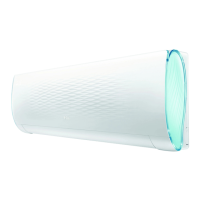
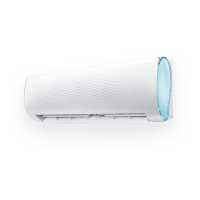
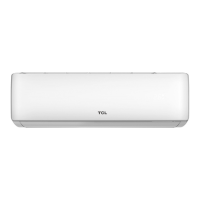
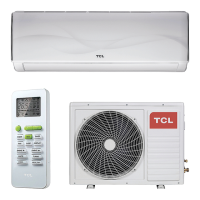
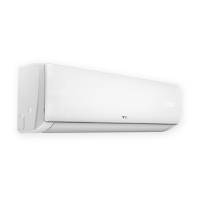
